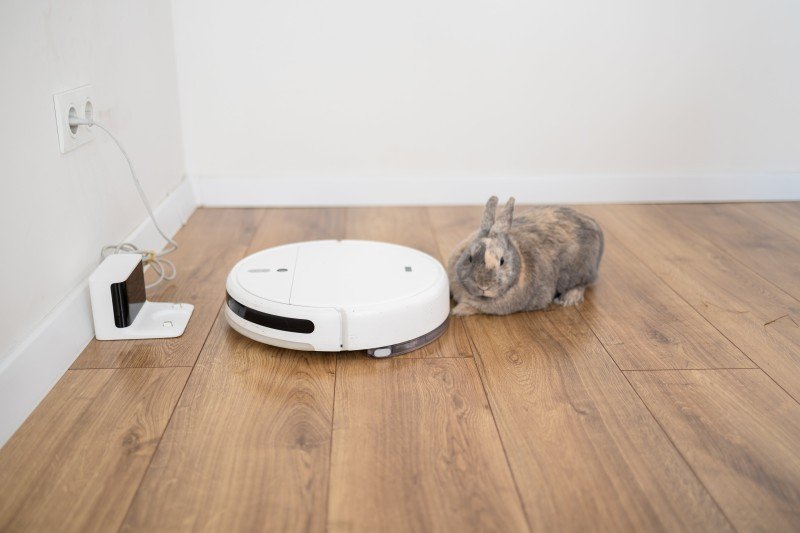10 Meetups About Cleaning Robots You Should Attend
Revolutionizing Home Maintenance: The Rise of Cleaning Robots
In an age where technology continues to affect everyday life, cleaning robots have become a considerable innovation in the field of domestic cleaning. These autonomously working makers have actually redefined how families manage cleaning jobs, supplying benefit and efficiency. With their ability to navigate spaces, prevent obstacles, and operate on pre-set schedules, cleaning robots are becoming essential tools for homeowners looking to enhance both their time and their living environment.
The Evolution of Cleaning Robots
Cleaning robots have actually gone through a remarkable change since their beginning. What began as primary machines has advanced into sophisticated gadgets geared up with innovative features. Below is a table highlighting some crucial turning points in the development of cleaning robots.
Year
Milestone
Description
1996
First Commercial Robot
The first robotic vacuum, Electrolux's Trilobite, was presented.
2002
Roomba Launch
iRobot released the Roomba, making robotic vacuum cleaners popular.
2004
Mapping Technology Introduced
iRobot presented smarter navigation abilities, allowing for much better cleaning paths.
2012
Smart device Integration
The introduction of mobile app control enabled users to control robots from another location.
2020
Advanced Sensors & & AI
Robots began making use of AI for boosted mapping and things acknowledgment.
Kinds Of Cleaning Robots
As technology has actually advanced, different types of cleaning robots have surfaced, each designed to deal with various cleaning needs. A few of these consist of:
Robotic Vacuums
- Created to autonomously vacuum floorings, they often feature sensing units to browse around rooms and return to their charging stations.
Robotic Mops
- These robots are equipped with mopping performance, making use of water or cleaning solutions to scrub floors.
Window Cleaning Robots
- Specifically engineered for window cleaning, these devices can climb vertical surfaces utilizing suction or magnetic systems.
Swimming Pool Cleaning Robots
- Created for in-ground swimming pools, these robots gather particles and even scrub the walls of the pool effectively.
Multi-tasking Robots
- Some contemporary cleaning robots integrate vacuuming and mopping abilities, providing versatile cleaning solutions.
How Cleaning Robots Work
The core functionality of cleaning robots is focused around their capability to navigate homes autonomously while carrying out cleaning tasks. Here's a breakdown of the fundamental components that enable them to perform efficiently:
Sensors: Most cleaning robots are equipped with sensing units that help them find challenges, slopes, and edges, preventing falls and collisions.
Navigation Technology: Many robots utilize a combination of gyroscopes, accelerometers, and often cameras or LIDAR for navigation. This enables them to map their environment and clean effectively without missing out on spots.
Power Sources: Most cleaning robots operate on rechargeable batteries, with many capable of going back to their charging docks when their power runs low.
Cleaning Mechanisms: Whether through suction for vacuuming or rotating brushes for mopping, cleaning robots include various systems customized for effective dirt elimination.
Benefits of Cleaning Robots
The incorporation of cleaning robots in families provides numerous benefits:
Time-Saving: Cleaning robots can operate on their own, permitting house owners to engage in other activities.
Consistent Cleaning: With set up cleaning times, these robots guarantee constant upkeep of the home.
Hard-to-Reach Areas: Cleaning robots can access narrow areas and corners that standard cleaning tools may deal with.
Lowered Allergens: Regular cleaning helps reduce dust and irritants, contributing to a much healthier living environment.
Limitations of Cleaning Robots
In spite of their lots of advantages, cleaning robots also present particular restrictions that users ought to consider:
High Initial Cost: While the price of cleaning robots has reduced in time, some sophisticated designs can be fairly expensive.
Irregular Performance: Not all robots perform equally; some may have problem with specific surface areas or dirt types, leading to unacceptable outcomes.
Limited Capacity: Many robotic vacuums have smaller dustbin capabilities, requiring more frequent emptying than conventional vacuum cleaners.
Frequently Asked Questions about Cleaning Robots
Q: Are cleaning robots worth the investment?A: Cleaning robots can be
a beneficial financial investment for those looking for time-saving options. They can considerably alleviate the cleaning problem, especially for hectic homes. Q: Can cleaning robots be programmed?A: Yes, many cleaning robots feature programmable schedules and modes, allowing users to set specific cleaning times and areas. Q: How do I keep my cleaning robot?A: Regular maintenance involves cleaning the brushes, clearing the dustbin, and sometimes looking for software updates. Q: Are cleaning robots effective on all surfaces?A: Most robotic vacuums are effective on hard floors and low-pile carpets. However, effectiveness may
vary on thick carpets or certain types of rugs. visit the next web site : Do cleaning robots work well under furniture?A: Cleaning robots are developed to fit under a lot of furniture; nevertheless, the effectiveness can depend on the height of the furnishings.
**Cleaning robots represent a development in the world of
domestic tasks, providing a blend of innovation, benefit, and effectiveness. While they are not a complete replacement for traditional
cleaning techniques, they considerably improve housekeeping capabilities. As improvements continue, future versions of these devices are anticipated to end up being much more intelligent, effective, and easy to use, additional incorporating into the smart homes of tomorrow. The modern-day property owner hence deals with an interesting future where cleaning robots could take much of the drudgery out of home maintenance, allowing for a cleaner home with very little effort.  **
**